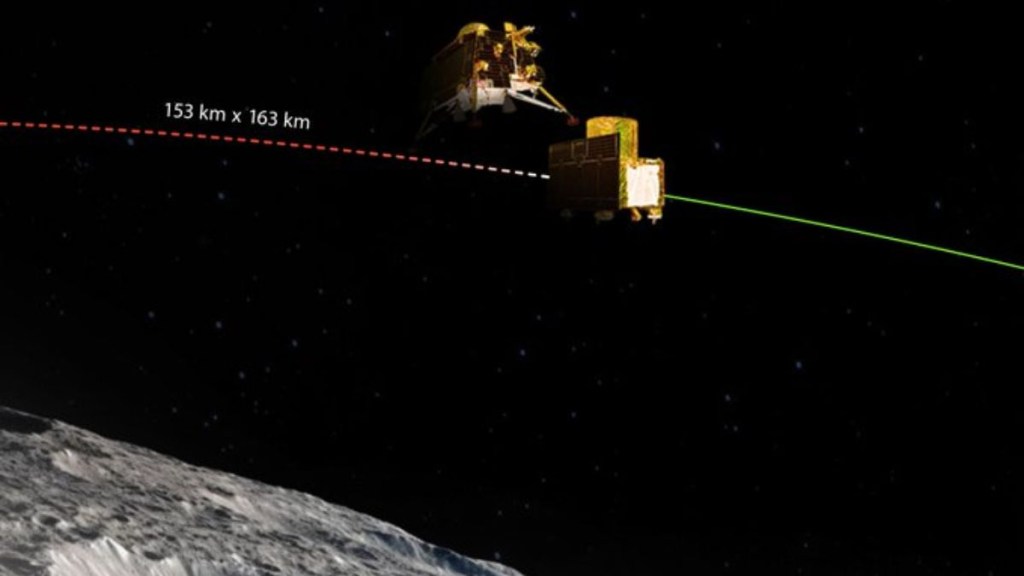The Vikram lander on Chandrayaan-3 underwent a critical deboosting manoeuvre today after successfully separating from the propulsion module a day before. The Indian Space Research Organisation (ISRO) on Friday took it to X (formerly Twitter) to announced that the deboosting manoeuvre was completed at around 4:00 pm.
“The Lander Module (LM) health is normal. LM successfully underwent a deboosting operation that reduced its orbit to 113 km x 157 km. The second deboosting operation is scheduled for August 20, 2023, around 0200 Hrs. IST,” said ISRO.
Deboosting is the process of slowing down to position itself in an orbit where the orbit’s closest point to the Moon (Perilune) is 30 km and the farthest point (the Apolune) is 100 km.
ISRO on Thursday took it to X (formerly Twitter) to share an update on the mission and announced that the next Lander Module (Deorbit 1) manoeuvre is scheduled for tomorrow (August 18, 2023) around 1600 hrs IST.
Key details of Chandrayaan-3 mission
It may be noted that the lunar south pole presents a vastly different and more challenging terrain compared to the equatorial region.
It has been a month and three days since ISRO launched the Chandrayaan-3 mission from the Satish Dhawan Space Centre in Andhra Pradesh’s Sriharikota on July 14. Chandrayaan-3 entered into lunar orbit on August 5. As the mission progressed, a series of manoeuvres were conducted by the national space agency to gradually reduce Chandrayaan-3’s orbit and position it over the lunar poles. The orbit reduction manoeuvres were carried out on August 6, 9 and 14.
The lander and the rover, Pragyaan, will attempt the landing on the south pole of the Moon on August 23. It may be noted that the lander and the rover are carrying scientific payloads to carry out various experiments on the lunar surface.
Notably, the success of this mission will make India the fourth nation globally to achieve this remarkable milestone, joining the companies of the United States, Russia, and China.
The mission objectives of Chandrayaan-3 are to demonstrate a safe and soft landing on the lunar surface, to demonstrate the rover operating on the Moon, and to conduct in-situ scientific experiments.
India’s third lunar mission is one of the most cost-effective space missions as compared to its predecessors with an estimated budget of Rs 615 crore.
(With inputs from agencies)

